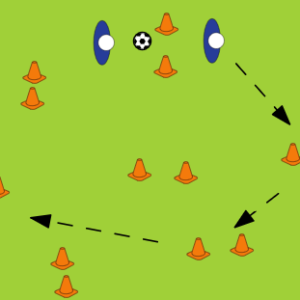Warm Up
Increase the area for children to move around in to support those who find negotiating space difficult.
Physical Competence
Children may work in similar or mixed ability pairs.
Adults may need to model the skills again for some groups individually.
Feedback and things to look for will need to be made clear to children and modelled to support lower achievers to give accurate feedback.
Children may set their own challenge based on their ability.
Decision Making
Space – make the area larger to ensure children have more time to think and clearer opportunities to pass.
Defenders may be more passive to begin with (applying pressure to attackers but not trying to take the ball)
Improving Performance
Give specific aspects to look for to help with feedback progress
Cool Down
Increase the area for children to move around in to support those who find negotiating space difficult

